Best
Affordable
Digital Piano
-
Overall: A Teacher's Favourite For Learning
With Graded Hammer Action Keys -
Best Feature: With A Graded Standard Hammer Keyboard And
Sustain Pedal For An Authentic Playing Feel -
TedScore™: 9/10
Best
Overall Beginner Piano
-
Overall: The Keyboard Has 88 Weighted Keys With Graded Hammer Standard (GHS) To Make It Feel Like Playing A Real Piano
-
Best Feature: Yamaha's Pure CF Sound Engine For High-Quality Sound Reproduction
-
TedScore™: 9/10
Best
Home Digital
Piano
-
Overall: Graded Hammer Standard (GHS)
Keyboard With 88
Weighted Keys For A Great Experience -
Best Feature: Yamaha's Pure CF Sound Engine
For High-Quality Sound Reproduction PROS -
TedScore™: 9/10
Choosing between the Yamaha P45 and the P125 can feel like picking between two delightful desserts when you’re only allowed one.
Do not worry; I’m here to guide you through this sweet dilemma.
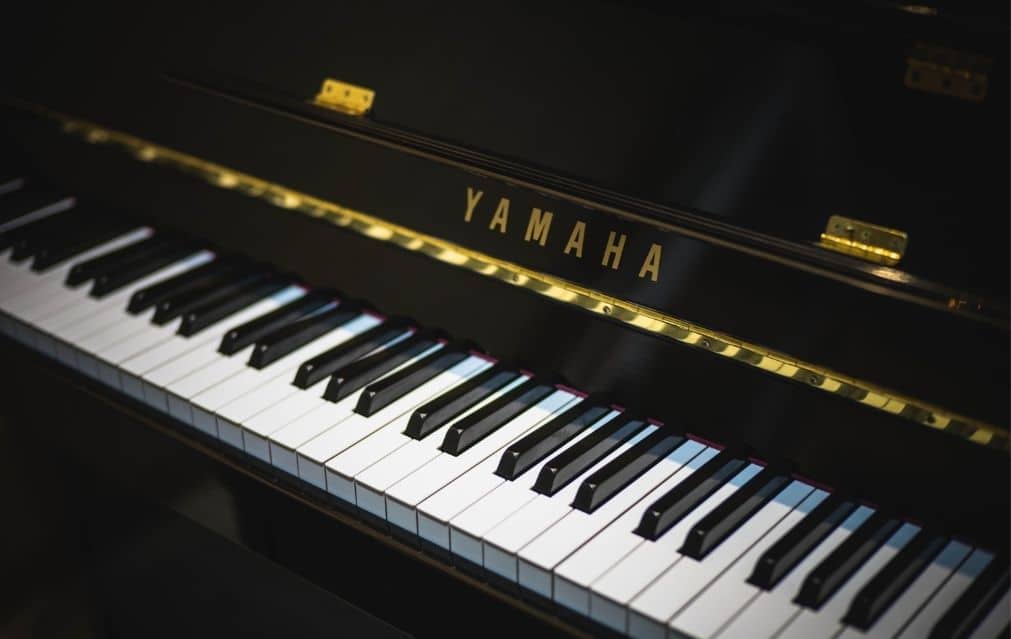
In a nutshell, the Yamaha P125 trumps the P45 with its superior sound engine and enhanced features.
The decision doesn’t end there; speakers, polyphony, and app compatibility all play their part. The right choice can transform your studio or family room into a sound escape.
Keep on reading me as we unpack these details and help you find your perfect match.
Introduction to Digital Pianos
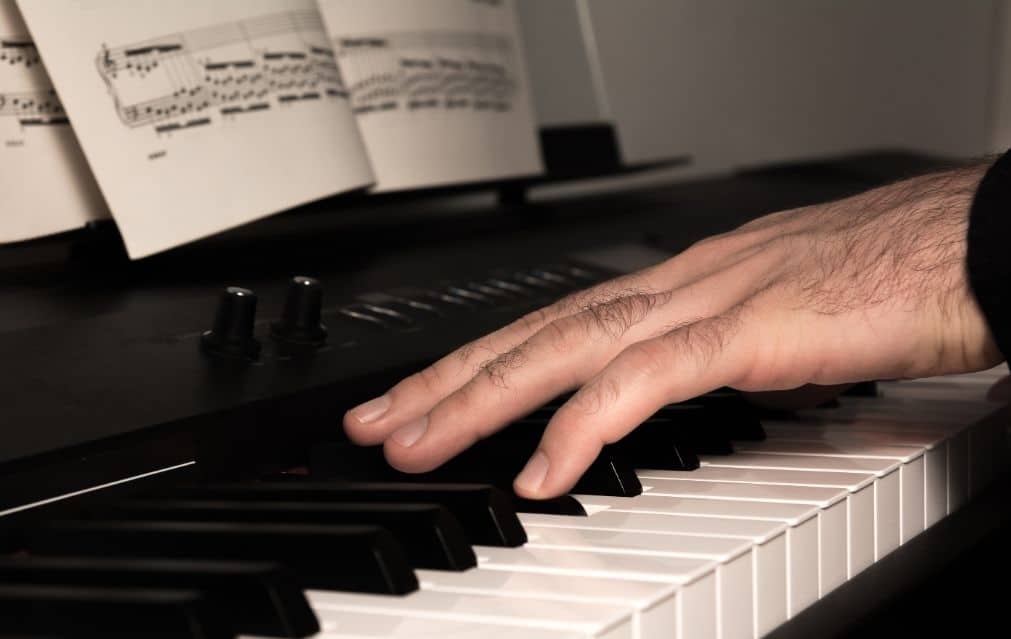
Digital pianos have revolutionized the music industry by providing an affordable and portable alternative to traditional acoustic pianos.
With advancements in technology, digital pianos have become increasingly sophisticated, offering a range of features and sound quality that rival their acoustic counterparts.
Yamaha, a renowned manufacturer of musical instruments, has been at the forefront of digital piano innovation, producing a range of models that cater to different needs and budgets.
In this article, we will compare two popular digital pianos from Yamaha, the P45 and P125, to help you make an informed decision when choosing the right instrument for your needs.
Design and Build Quality
ONE
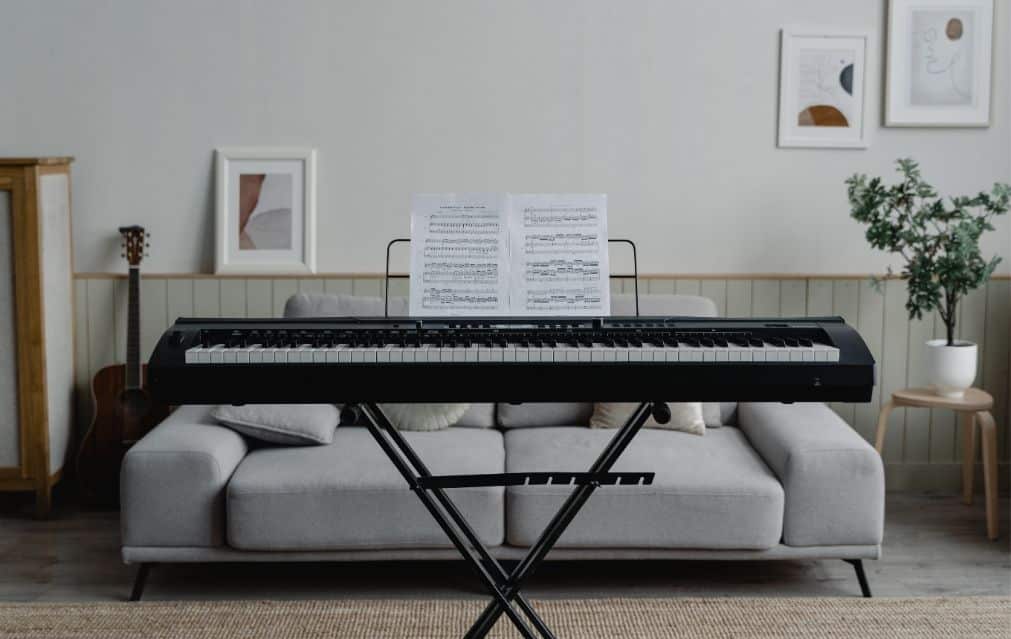
When considering the Yamaha P-45 and Yamaha P-125 as entry-level digital pianos, their design and build quality stand out as significant factors. These portable digital pianos share certain features but differ in key aspects.
Portability and Size
- Compact Nature: Both the P-45 and P-125 are engineered to be portable. I appreciate how their slim profiles make them excellent for moving from place to place without fuss. You can easily fit either into a small room or a packed car boot.
- Weight Considerations: The P-45, slightly lighter than the P-125, wins on portability. Weighing around 11.5 kg compared to P-125’s 11.8 kg isn’t a massive leap, but every bit counts when you’re transporting it frequently.
- Dimensions Matter: Dimensions differ slightly, with the P-125 being a bit more expansive due to its added features. If space is your primary concern, the P-45 might take the prize for fitting tighter spaces better.
- Design Aesthetics: Both models’ sleek designs radiate an understated elegance. The P-125 edges it out with its more modern design, which appeals to those looking for a contemporary setup.
Keyboard and Weighted Action
- Graded Hammer Standard (GHS) Action: In both models, the keys mimic the feel of an acoustic piano. Heavier in the lower register and lighter in the upper, they offer a realistic playing experience. I believe this is crucial for developing finger strength and technique.
- Key Differences: Here’s where the P-125 stands out for me. The action feels a touch more responsive than the P-45. It’s perfect for those who wish for a slight edge in playing dynamics.
- Key Surface: The P-125’s keys provide a slightly better grip, which can make playing more comfortable, particularly during lengthy sessions. The P-45’s keys, while good, might be a tad slicker when compared side-by-side.
- Suitable for Beginners: Both models are beautifully suited to beginners; however, if realistic touch progression is a key concern, you might find my point resonates—it’s the P-125 that offers a slightly superior playing feel.
Sound Quality and Features
two
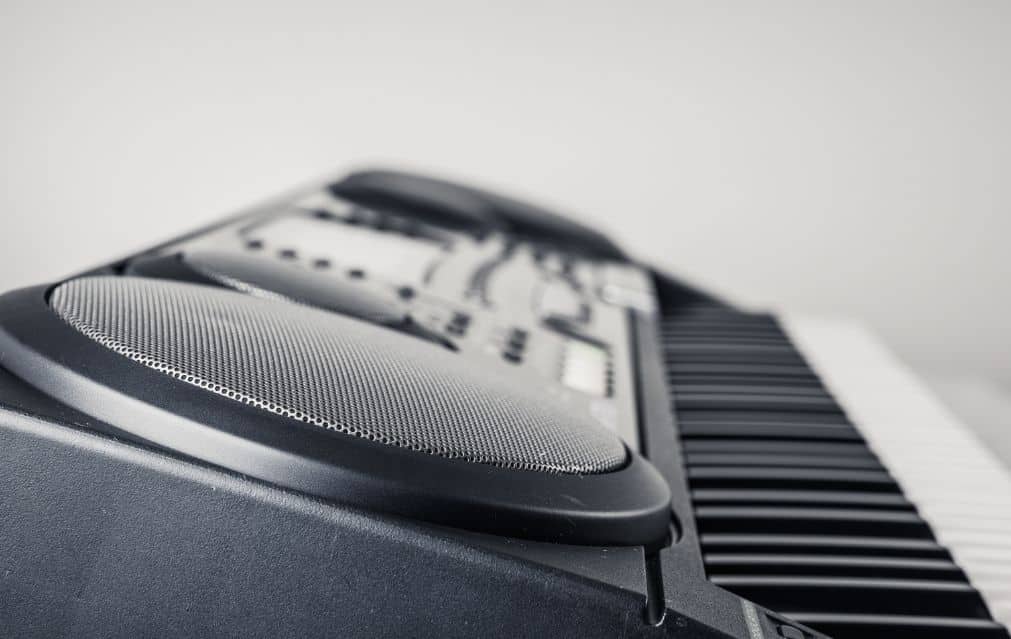
When comparing the Yamaha P45 and P125, several sound quality and feature differences stand out. From their sound engines to the number of notes they can play simultaneously and their speaker systems—these elements define the playing experience.
The P125 offers better representation of electric pianos among the instrument voices due to its advanced sound engine.
Pure CF Sound Engine and AWM Stereo Sampling
- The P45 uses AWM Stereo Sampling, which is Yamaha’s method of digitally sampling the sound of a high-quality grand piano. This technique delivers a sound that’s clear and precise, though somewhat basic compared to its counterpart.
- In contrast, the P125 boasts the Pure CF Sound Engine, which incorporates elements from the renowned Yamaha CFIIIS concert grand. This engine offers richer, more nuanced tones, capturing the complexities and harmonics necessary for an expressive performance.
Polyphony and Sound Presets
- Note Polyphony is a crucial element; it determines how many notes a keyboard can produce simultaneously. The Yamaha P45 offers 64 notes of polyphony, which is adequate for beginner players but might limit more advanced performances.
- Meanwhile, the P125 shines brightly with 192-note polyphony. This capability ensures that even the most complex pieces come through with clarity. Along with a greater variety of sound presets, the P125 gives me the flexibility to explore different musical styles without compromise.
Speakers and Stereo Sampling
- Good speakers are another deciding factor in sound quality. The P45’s speakers are functional but lack dynamic range, resulting in a somewhat “digital” sound that’s noticeable when compared to higher models.
- The P125 steps up with a two-way speaker system and better stereo sampling. This setup provides a deeper and richer tone that disperses sound upwards and downwards, recreating a more immersive sound environment—virtually like being in the presence of a real piano.
- In a nutshell, while both the Yamaha P45 and P125 offer impressive sound features, the latter distinguishes itself with superior sound engines and higher polyphony, making it a delight for those who prioritize sound in their musical experience.
Yamaha P45 Digital Piano
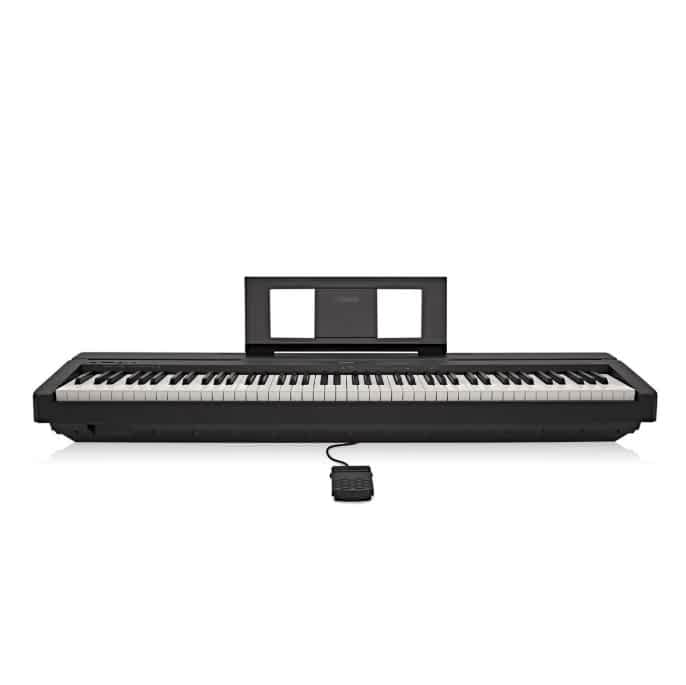
FEATURES: Tempo Range: 32 - 280
OTHER INFO: Polyphony: (Max.) 64
- Graded Hammer Standard (GHS) keyboard for realistic piano touch
- Advanced Wave Memory Stereo Sampling for authentic piano sound
- 10 voices, including grand piano, electric piano, and vibraphone
- Metronome and duo mode for easy learning
- Easy to use with simple controls
- Limited number of voices compared to more expensive models
- No stand or bench included
- Speakers may not be powerful enough for large rooms
When you click ‘Check Price’, you’ll see there are loads of great places to buy this item. Our personal favorite is Sweetwater for the US, and Thomann and Gear4Music for the UK & Europe.
They are the largest music retailers, with excellent customer service, competitive prices, really fast shipping, and the longest guarantees.
The professional musician who wrote this article combined many things,
from the product build, manufacturer’s reputation through to feedback
from other users, to create our famous TedScore™.
Yamaha P125 Digital Piano

PERFECT FOR: beginners
FEATURES: The keyboard has 88 weighted keys with Graded Hammer Standard (GHS) to make it feel like playing a real piano
OTHER INFO: Yamaha's Pure CF Sound Engine for high-quality sound reproduction
Yamaha P125 Digital Piano
- USB connectivity for easy integration with computers and other devices
- Versatile and portable design for practice and performance
- Wide range of voices and features for a customizable playing experience
- Built-in speakers and headphone jack for versatile listening options
- Higher price point compared to some other brands
- May not have as many advanced features as some professional-grade digital pianos
When you click ‘Check Price’, you’ll see there are loads of great places to buy this item. Our personal favorite is Sweetwater for the US, and Thomann and Gear4Music for the UK & Europe.
They are the largest music retailers, with excellent customer service, competitive prices, really fast shipping, and the longest guarantees.
The professional musician who wrote this article combined many things,
from the product build, manufacturer’s reputation through to feedback
from other users, to create our famous TedScore™.
Functionality and Connectivity
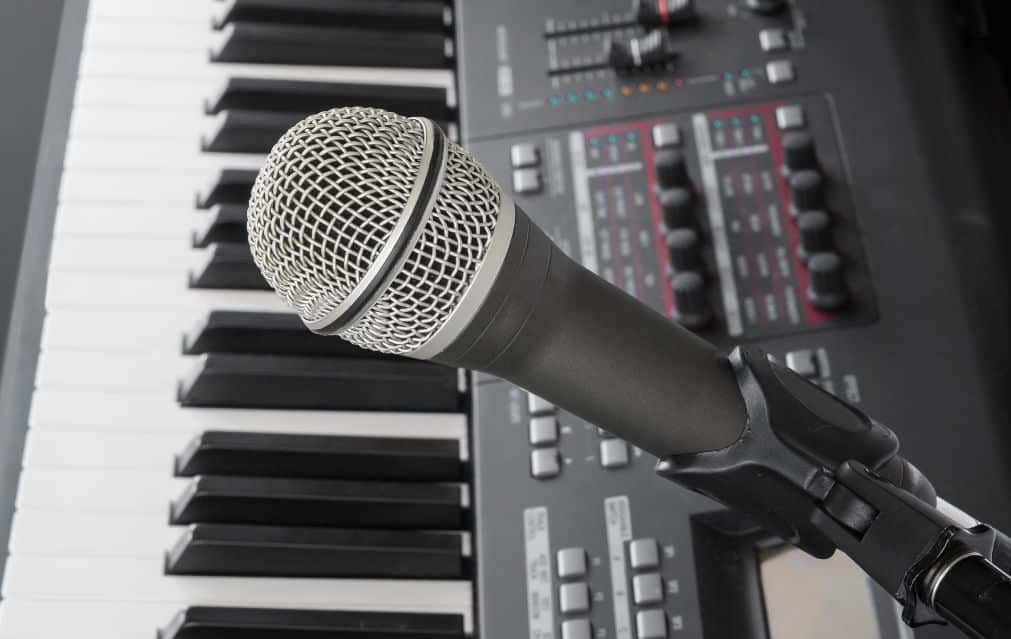
When I evaluate the Yamaha P45 and P125, their functionality and connectivity stand out. These aspects dictate how versatile and adaptable each piano is for a player.
Connectivity Options
- USB to HosoffersP45 and P125 offer USB to Host connectivity. This feature is essential for connecting to music software and other digital interfaces. With the P125, the connection is more advanced, offering faster data transfer, which can be crucial during performances.
- Headphone Jack: Both models come equipped with a headphone jack. This feature is a lifesaver, especially when I want to practice quietly without disturbing others. The P125 boasts better sound quality through headphones, which makes practicing more enjoyable.
- Line Outputs: An added advantage of the P125 is its line outputs. These allow me to connect directly to external speakers or amplifiers, which is a boon for performers who need a larger sound output for gigs.
Recording and Playback
- Recording Capability: The Yamaha P125 surpasses the P45 with its built-in recording functionality. This feature lets me record my performance directly on the instrument, which is helpful for self-evaluation and sharing.
- Playback Options: On playback, the P125 again shows its superiority. It offers multiple playback functions that aren’t available on the P45, enabling me to better review my progress.
Price and Value
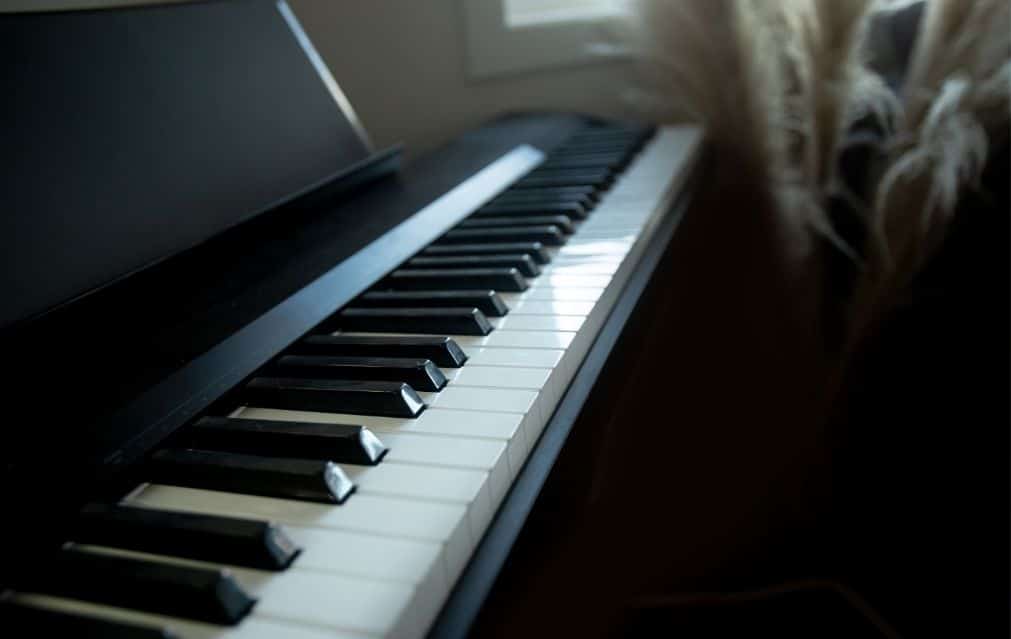
When it comes to digital pianos, price is often a significant factor in the decision-making process. The Yamaha P45 and P125 are both entry-level digital pianos, but they differ significantly in terms of price and value.
The P45 is priced around $500 USD, making it an attractive option for beginners or those on a tight budget.
The P125, on the other hand, is priced under $1,000 USD, offering a more advanced sound engine and additional features that justify the higher price tag.
While the P45 is a great value for its price, the P125 offers better sound quality and more features, making it a better investment for serious piano players.
Studio and Performance Use
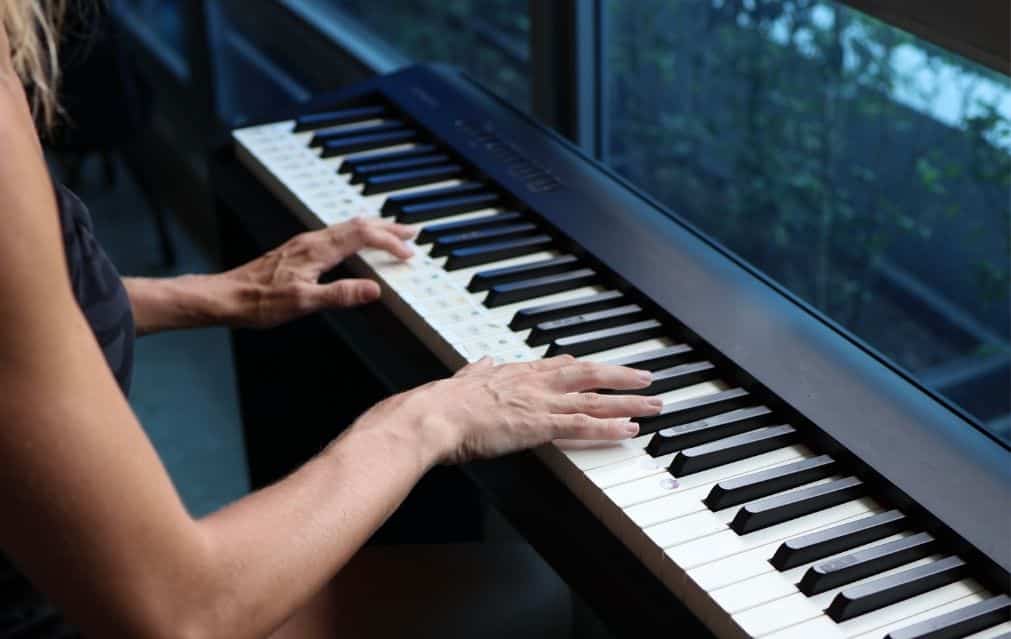
Both the Yamaha P45 and P125 are suitable for studio and performance use, but they differ in terms of their features and sound quality.
The P125 is equipped with a more advanced sound engine, offering a grand piano sound that is closer to an acoustic piano. It also features a USB audio interface, allowing for easy connectivity to computers and mobile devices.
The P45, on the other hand, has a more basic sound engine and lacks a USB audio interface.
However, it is still a great option for beginners or those who want a portable digital piano for practice and performance.
Acoustic Piano Experience
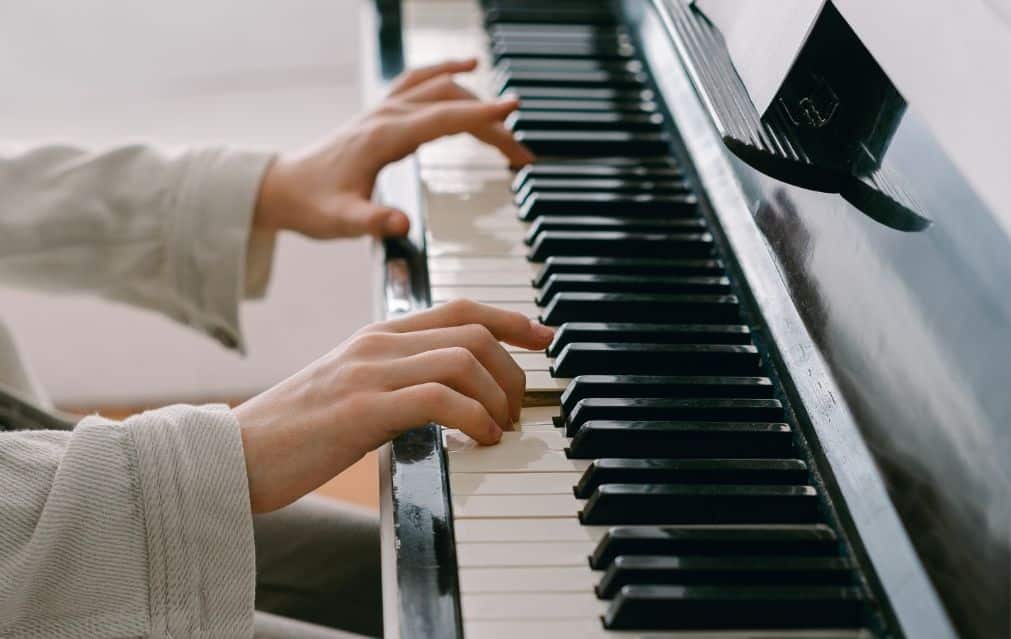
One of the key benefits of digital pianos is their ability to replicate the acoustic piano experience. Both the Yamaha P45 and P125 feature graded hammer standard action, which mimics the feel of an acoustic piano.
However, the P125 has a more advanced sound engine and additional features that enhance the acoustic piano experience. The P125’s sound engine includes string resonance, damper resonance, and key-off samples, allowing it to better simulate the harmonics of an acoustic piano.
Additionally, the P125’s smart pianist app allows for a more immersive experience, with features such as piano lessons and practice exercises.
Accessories and Additional Considerations
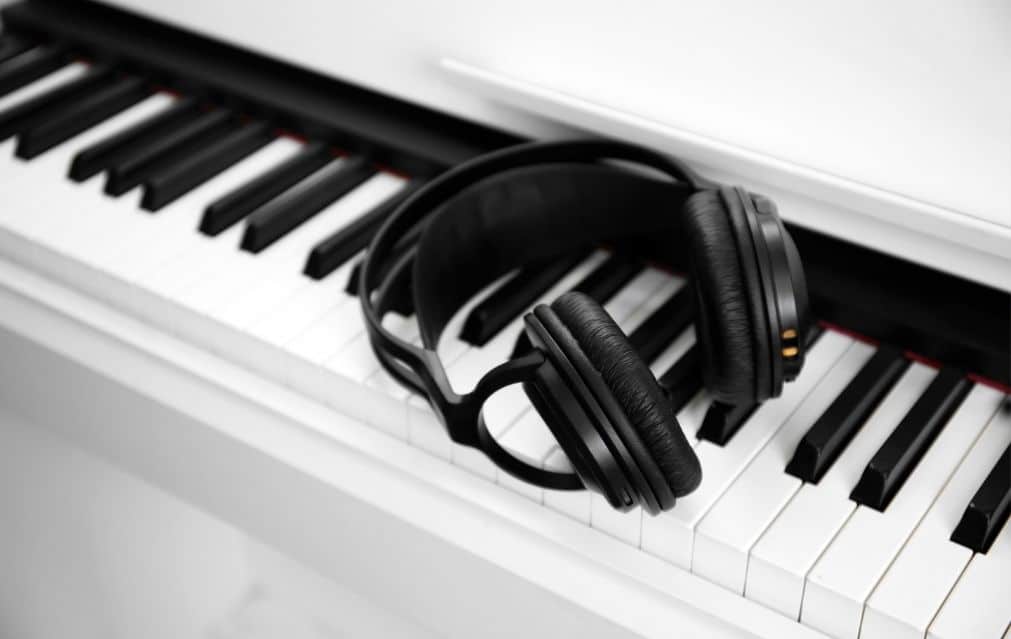
When deciding between the Yamaha P45 and P125, the choice of accessories and the options for adding pedals can influence the overall playing experience. The P125 offers more in terms of both included and optional add-ons, while the P45 remains a more basic choice.
Included and Optional Accessories
- The Yamaha P125 comes with a range of useful accessories. It often includes a music rest, which is perfect for holding sheet music, as well as a straightforward sustain pedal. Additionally, there’s the flexibility to add a music stand or benches. This makes it a versatile option for someone like me, who might want to enhance the setup.
- Yamaha P45, on the other hand, includes the basics. It features a music rest and its version of a sustain pedal. Although it lacks the array of options that the P125 offers, it still covers the essentials needed for practice or performance. Optional accessories for the P45 are more limited compared to the P125.
Sustain Pedal and Pedal Unit
The choices around sustain pedals and the possibility of upgrading to a pedal unit can be crucial.
- Sustain Pedal: The standard footswitch-style sustains that come with both models do the job but might feel basic. With the P125, there’s an opportunity to upgrade to a more substantial pedal that better mimics an acoustic piano’s response.
- Three Pedals and Damper Resonance: Unlike the P45, the P125 allows me to connect a full three-pedal unit. This adds damper resonance, making it feel closer to a traditional grand piano.
Despite the allure of additional pedals and options with the P125, the P45 still holds appeal for beginners or those seeking simplicity without extra frills.
Additional Recommendation
Yamaha YDP144
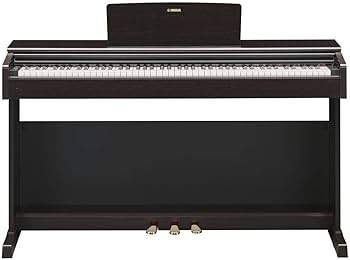
FEATURES: Graded Hammer Standard (GHS) Keyboard With 88 Weighted Keys For A Great Experience
OTHER INFO: Yamaha's Pure CF Sound Engine For High-Quality Sound Reproduction
- Stylish and elegant traditional upright piano design
- Three pedals for a more authentic playing experience
- Built-in recording and playback features for practice and performance
- USB connectivity for easy integration with computers and other devices
- Higher price point compared to some other beginner and intermediate digital pianos
When you click ‘Check Price’, you’ll see there are loads of great places to buy this item. Our personal favorite is Sweetwater for the US, and Thomann and Gear4Music for the UK & Europe.
They are the largest music retailers, with excellent customer service, competitive prices, really fast shipping, and the longest guarantees.
The professional musician who wrote this article combined many things,
from the product build, manufacturer’s reputation through to feedback
from other users, to create our famous TedScore™.
The End Result:
Yamaha P45 vs P125
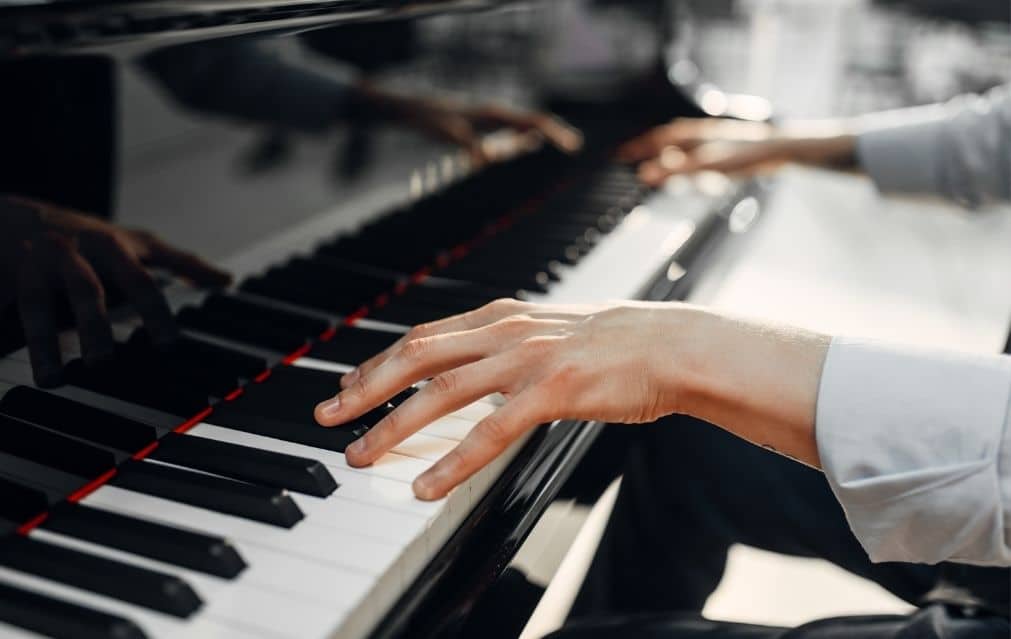
When comparing the Yamaha P45 and P125 digital pianos, both offer a grand piano sound and can serve as a convenient USB audio interface for recording.
However, the P125 boasts an upgraded sound engine with more polyphony and a wider variety of high-quality instrument sounds. The P125 offers better representation of electric pianos due to its advanced sound engine.
Both models are suitable for piano lessons and can be used as MIDI controller, but the P125’s enhanced features make it a more versatile choice for those seeking a fuller experience akin to playing a traditional piano.
Additionally, the P125 is compatible with the Smart Pianist app, which provides a range of interactive features and functions not available on the P45, further setting it apart from its more basic counterpart.
The P45, while certainly dependable, uses an older sound engine. It lacks the nuance found in its sibling. If you’re starting and budget is a concern, the P45 offers basic features that will serve beginners well without breaking the bank.
My personal take?
If you’re serious about playing and can stretch your budget a bit, the P125 will likely be more fulfilling. It’s an investment in your musical journey, offering a richer and more dynamic playing experience.
Whether following your passion or pursuing hobbies, having excellent tools makes the journey enjoyable.
Follow along…
Now that you know the positive effects of playing the piano, it is time to learn how to play it. If you want to learn or know someone who wants to learn the piano, you might want to check this next article!
FAQ's
Yamaha’s P125 and P45 digital pianos are both available, but the P125 is generally considered the better model due to its enhanced features, such as improved sound quality, more polyphony, and additional built-in rhythms and voices.
The Yamaha P-45 digital piano offers a realistic piano feel with its weighted keys and Graded Hammer Standard (GHS) action, which mimics the heavier touch in the lower keys and the lighter touch in the higher keys found on an acoustic piano.
Yes, the Yamaha P-45 is a suitable choice for intermediate players. It provides a realistic piano feel, good sound quality, and essential features that can support the development of piano skills at this level.
The Yamaha P71 and P45 are essentially the same digital piano models. The P71 is an Amazon-exclusive version of the P45, offering identical features and specifications.
The Yamaha P125 is generally considered the better choice for a studio compared to the P45, as it offers enhanced features such as improved sound quality, more polyphony, additional voices and rhythms, and a more powerful amplification system.











hey robert emery, kinda confused abt the polyphony thing. does having more really make a diff in sound? thanks 🙂
I’m impressed with Yamaha’s Pure CF Sound Engine and AWM Stereo Sampling. It’s rare to find digital pianos that can so closely mimic the resonance and depth of an acoustic piano. Would love to see how it compares in a blind test against real strings.
wait, digital pianos don’t need tuning? sign me up, my guitar hates me lol
lol, feel that. My piano is the only thing in tune in my life.
I appreciate the detailed analysis of the keyboard and weighted action. As a music teacher, it’s crucial to provide students with instruments that offer a realistic touch response. This encourages proper technique from the beginning. It’s commendable that digital pianos have evolved to closely replicate the heaviness and rebound of acoustic piano keys. This should be a significant consideration for anyone in the market for a digital piano. Thank you for highlighting these features, Robert Emery.